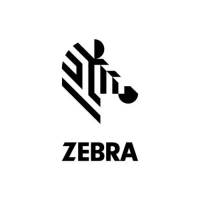Wireless
100
Bluetooth Power States
The Bluetooth radio is off by default:
• Suspend - When the device goes into suspend mode, the Bluetooth radio stays on.
• Airplane Mode - When the device is placed in Airplane Mode, the Bluetooth radio turns off. When Airplane
mode is disabled, the Bluetooth radio returns to the prior state. When in Airplane Mode, the Bluetooth radio
can be turned back on if desired.
Bluetooth Radio Power
Turn off the Bluetooth radio to save power or if entering an area with radio restrictions (for example, an
airplane). When the radio is off, other Bluetooth devices cannot see or connect to the device. Turn on the
Bluetooth radio to exchange information with other Bluetooth devices (within range). Communicate only with
Bluetooth radios in close proximity.
NOTE: To achieve the best battery life, turn off radios when not in use.
Enabling Bluetooth
To enable Bluetooth:
1. Swipe down from the Status bar to open the Quick Access panel.
2. Touch to turn Bluetooth on.
3. Touch .
HID Over GATT Profile (HOGP) Defines the procedures and features used by Bluetooth low energy HID
Devices using GATT and Bluetooth HID Hosts using GATT.
Scan Parameters Profile (ScPP) Provides devices with information to assist them in managing their
connection idle timeout and advertising parameters to optimize for
power consumption and/or reconnection latency.
SIM Access Profile (SAP) Allows devices such as car phones with built-in GSM transceivers to
connect to a SIM card in a Bluetooth enabled device.
Message Access Profile (MAP) Defines the features and procedures used by devices that exchange
message objects.
Dial Up Networking (DUN) Provides a standard to access the Internet and other dial-up services
over Bluetooth.
Generic Access Profile (GAP) Use for device discovery and authentication.
OBject EXchange (OBEX) Facilitates the exchange of binary objects between devices.
Generic Object Exchange Profile
(GOEP)
Provides a basis for other data profiles. Based on OBEX.
Generic Audio/Video Distribution
Profile (GAVDP)
Provides the basis for A2DP and VDP, the basis of the systems
designed for distributing video and audio streams using Bluetooth
technology.
Table 12 Bluetooth Profiles (Continued)
Profile Description

